Let’s try again: Why can’t we make takoyaki with squid instead of octopus?
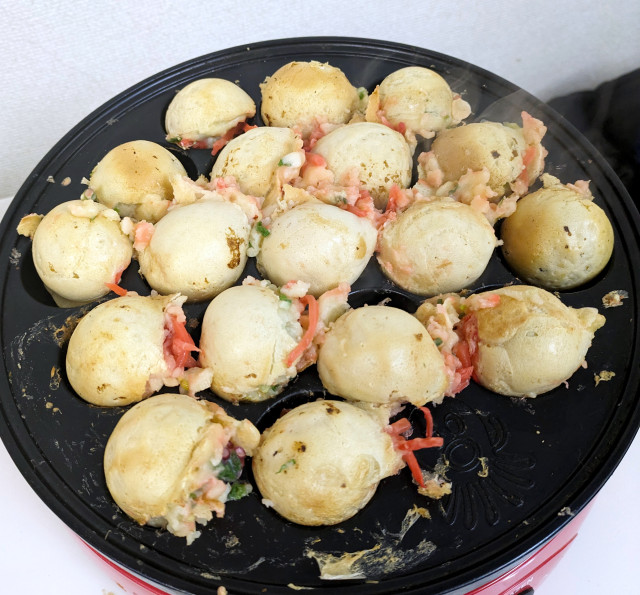
We asked once before…but surely this time we’ll find the answer we’re looking for.
Our Japanese-language foodie reporter Mr. Sato found himself wondering recently…can’t you make takoyaki, Osaka’s famous octopus-stuffed grilled balls of batter, with squid instead of octopus? He’s not the only one to wonder. His fellow reporter, K. Masami, wondered the same thing late last year, and even gave it a try.
But Masami lives in Nara and Mr. Sato in Tokyo, so Mr. Sato didn’t get to participate in her experiment. Naturally, he trusts Masami’s assessment that squid wasn’t as good as octopus, but the only way to truly know would be for him to try it himself. Besides, he likes squid far more than he likes octopus…so surely he would like takoyaki with squid inside far more, too?
Without wasting any time, he popped into the store and to procure both squid and octopus meat for his experiment. Unfortunately, he had rather a hard time finding them. Some stores had squid but no octopus, and some had only octopus. If they did have squid, it was sliced into thin strips, almost like noodles. That wasn’t going to help him make takoyaki, which is typically made with cubed octopus.
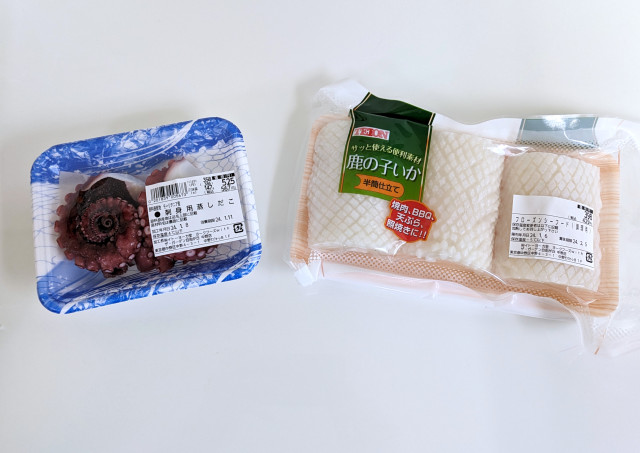
In the end he had to go to four different supermarkets to get his hands on suitable cuts of octopus and squid.
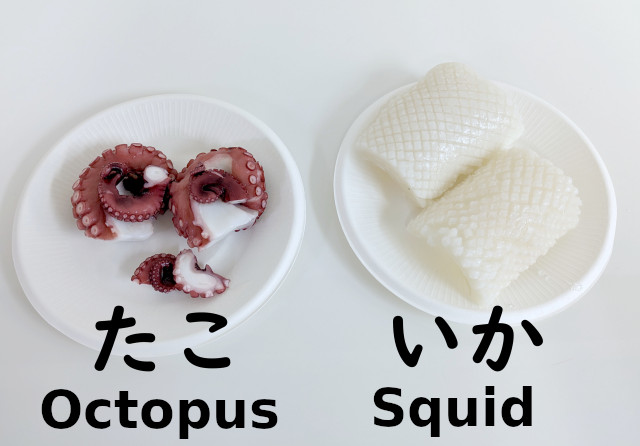
With everything finally on hand, including takoyaki flour, Mr. Sato began cooking. He started by making the takoyaki batter by mixing eggs and water into the powder. Then he poured that into a takoyaki griller and sprinkled it with pickled red ginger, green onions, and pieces of either squid or octopus. Then he sat back to wait as the grill cooked up the batter to a golden brown color before he flipped them to finish them off.
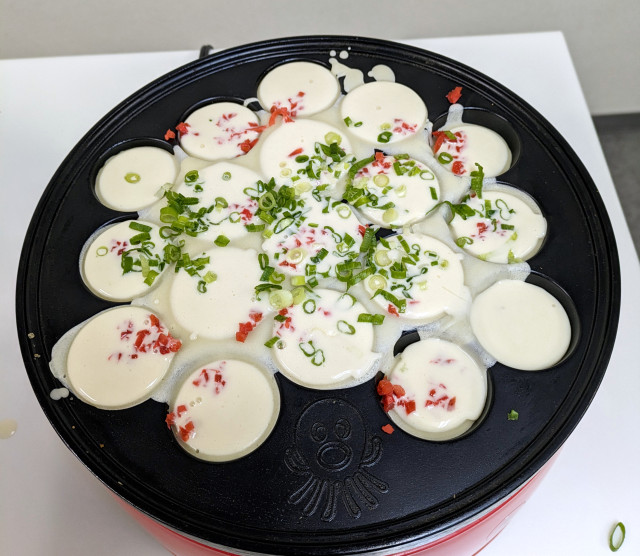
They came out looking kind of weird.
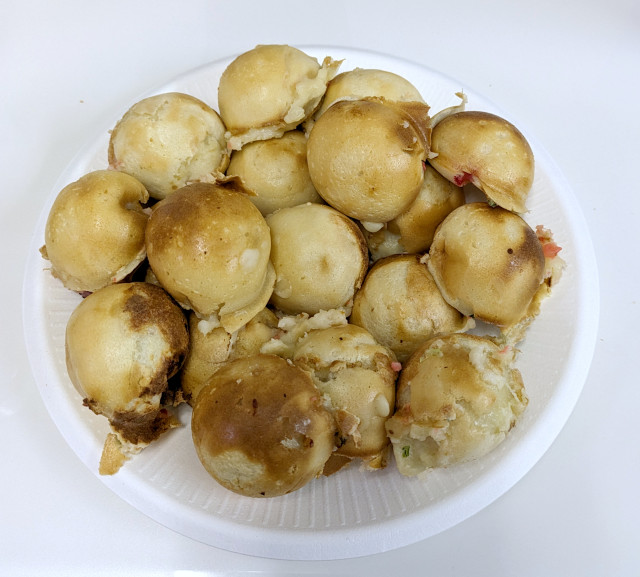
Now might be a good time to mention that Mr. Sato is not, by any means, an expert in takoyaki. Though he grew up in western Japan, his home prefecture of Shimane was not influenced by the Kansai region’s penchant for batter-based foods like takoyaki and okonomiyaki. That’s why when mixing the batter, he just kind of eyeballed the measurements and threw it all together without worrying too much about specifics.
So it wasn’t really any surprise that what Mr. Sato ended up making didn’t really look much like takoyaki, but more like spherical cakes.
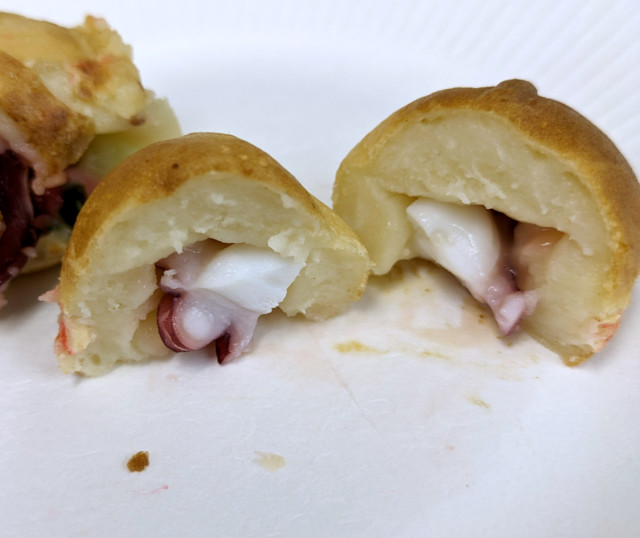
When he cut one in half, it was clear the dough was too fluffy, with a consistency somewhat like bread, so he surmised he didn’t put enough water in. It was pretty tasty in its own right, but not what he was going for in this experiment, so he decided to remake them, this time properly measuring out the ingredients.
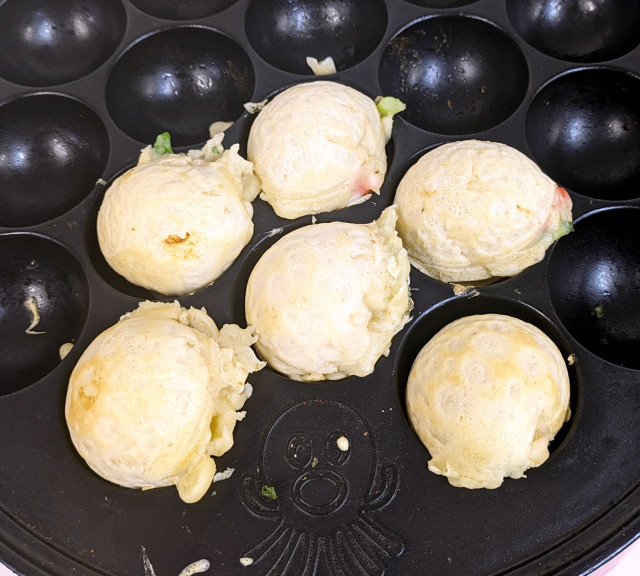
But rather than making a whole new batch (and potentially bombing again) he decided to first do a test run with just a few. This time, they came out looking like proper takoyaki.
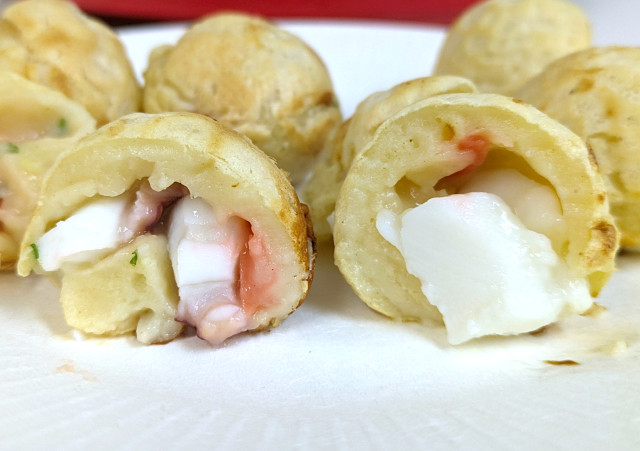
They also looked much better than the last batch when he cut them open. He was much relieved, since he’d basically spent the whole day on this experiment, what with the shopping and the botched first batch. He had honestly underestimated how difficult it would be to make.
He continued cooking takoyaki with the same batter. Luckily, this time, he finally got it right.

Now then, while of course he’d be sampling them himself, he didn’t want to be alone in his taste testing, so he recruited the assistance of our Osaka native reporter, Seiji Nakazawa.
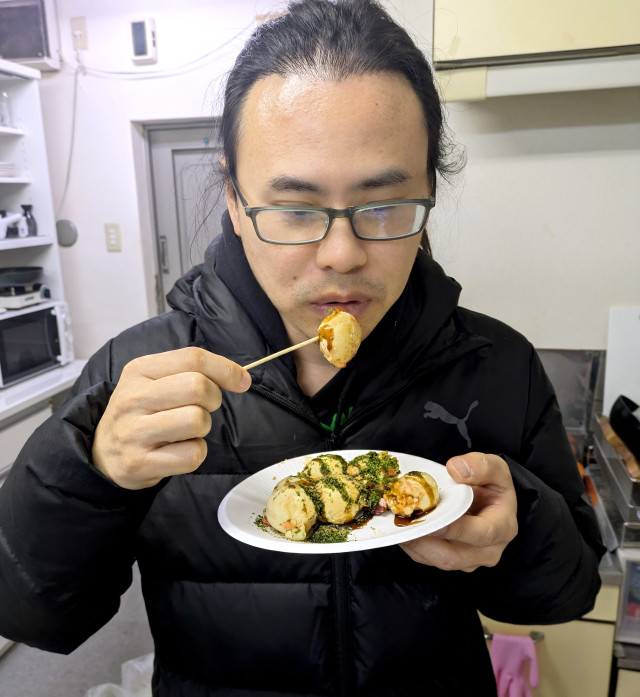
On the subject of Mr. Sato’s takoyaki workmanship, Seiji said, “Not bad. I think you might have overcooked them a bit. If you take them out a bit earlier, the inside ends up a gooier, which makes it taste better. But this is still pretty good.”
Mr. Sato was touched that Seiji would show appreciation for his hard day’s work.
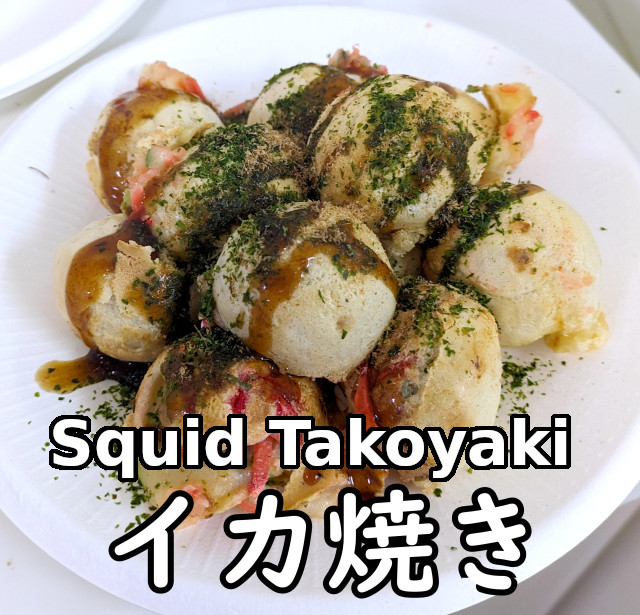
But when Mr. Sato tried his homemade squid takoyaki, he couldn’t help but feel that it was unsatisfactory. The squid had no presence in the takoyaki whatsoever. If he hadn’t made them himself, he wouldn’t have even noticed it was in there. This was a shame, because he had really thought squid takoyaki would be good.
Seiji said, “I think it’s because octopus meat is much firmer than squid meat, so that’s why takoyaki made with octopus has a better feel. I think it’s just that squid is too soft.”
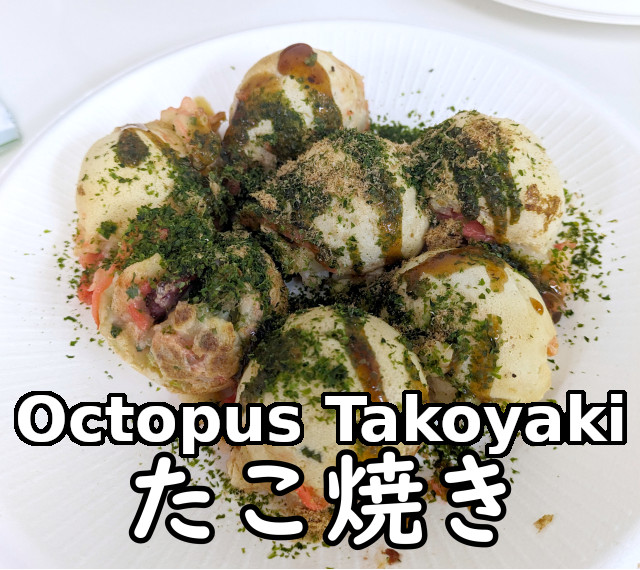
“Interesting,” mused Mr. Sato. So in other words, the gooey center of the dough contrasting with the firmness of the octopus is what makes takoyaki so good then.
“In that case!” cried Mr. Sato, raising his finger in a victorious gesture, “If you want more texture, I’ll give you texture!” He had two things that could surpass octopus, at least in terms of texture: dried squid and grilled scallop strips. These two seafood snack delicacies would surely provide better texture and flavor to takoyaki than octopus.
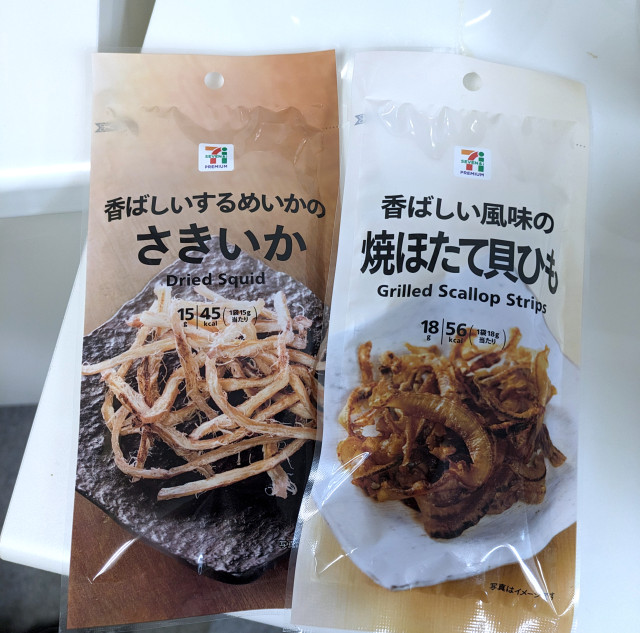
Once more, Mr. Sato fired up the takoyaki griller and mixed up some batter to pour in it. But this time, instead of cubed squid or octopus, he put in strips of dried squid and grilled scallops.
Unfortunately, this experiment was a bit of a bust, too. The dried squid strips were too thin, they just got lost in the gooey batter. This further cemented the idea that, without a solid cluster of meat in the center, takoyaki just wouldn’t be takoyaki-like.

On the other hand, the grilled scallop strips were actually on the right track! It just needed one final push. Maybe if he used whole dried scallops, it would be close to, if not better than, actual octopus. However, scallops are a bit more expensive than octopus, so it wouldn’t live up to takoyaki’s “cheap street food” image.
After all this, Mr. Sato had to conclude that what makes takoyaki delicious is the firmness of the octopus. And in any case, takoyaki is sufficiently delicious on its own; there really isn’t any reason to modify the recipe. In short, takoyaki is best as it is!
…At least for now. Surely there’s something good that can usurp the octopus’ position of power in takoyaki? Mr. Sato has decided he will return to the SoraKitchen to try again with something new soon.
Images © SoraNews24
● Want to hear about SoraNews24’s latest articles as soon as they’re published? Follow us on Facebook and Twitter!
Credit:

0 comments:
Post a Comment